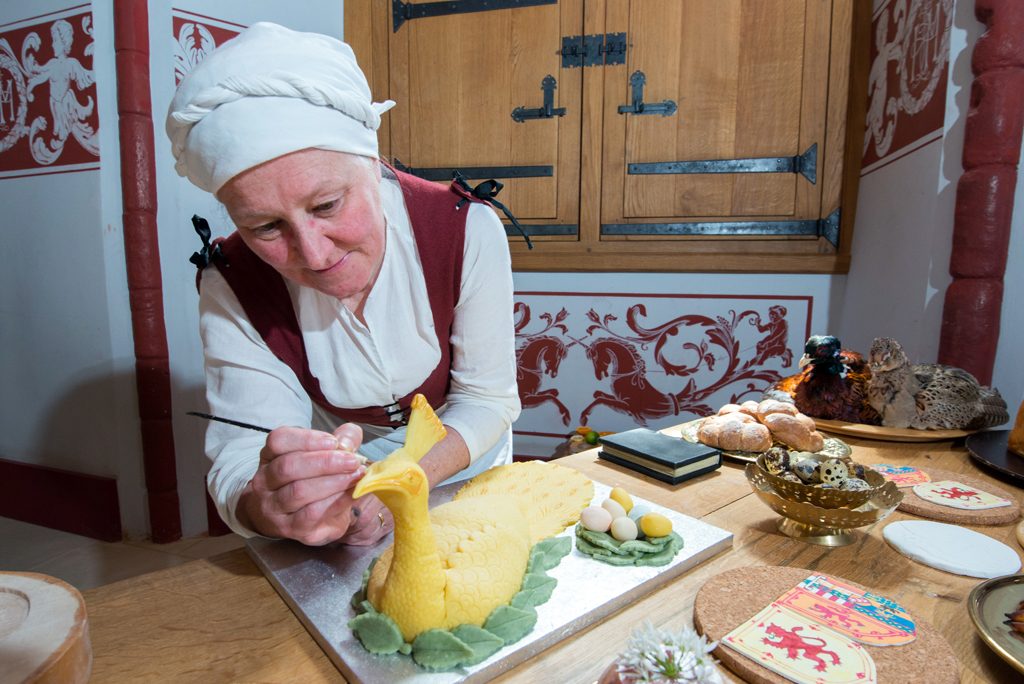At this time of year, our thoughts often turn to food. But did you know that historically, food has often been associated with both punishments and rewards? Here’s a look back at some glorious and gruesome servings…
Pious Punishment
In 1307 (or possibly 1308 – sources differ) there was a dark episode in the Wars of Independence.
James Douglas, a supporter of Robert the Bruce often known as the ‘Black Douglas’, had been ousted from his castle by an English garrison. He made a devious plan to get it back.
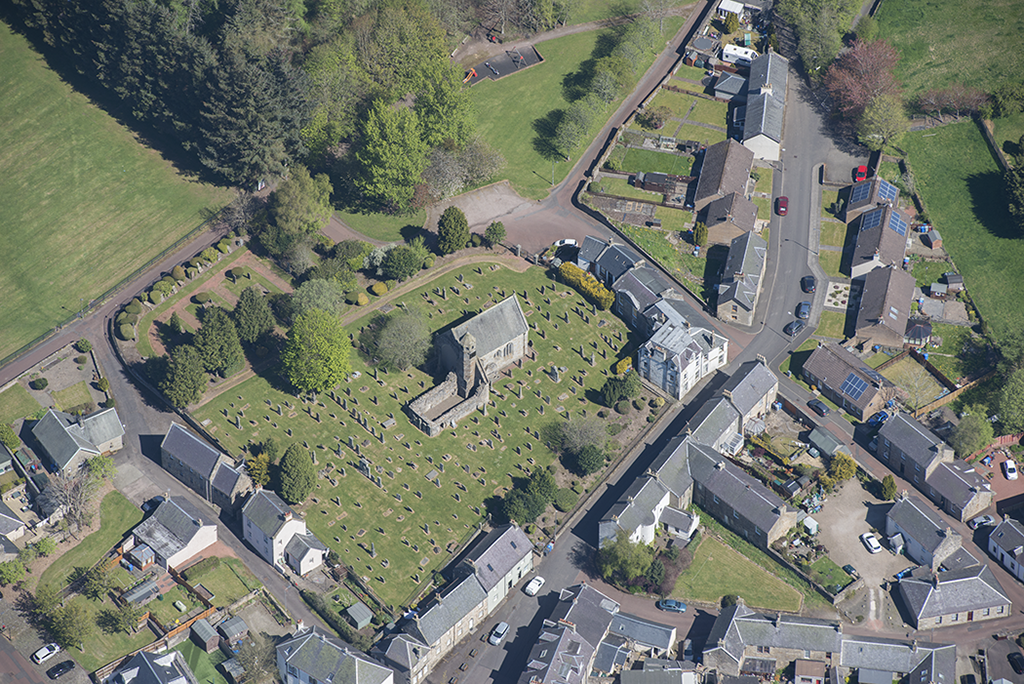
St Bride’s Church
He waited until the English troops left to attend Mass at St Bride’s Church. Once inside he attacked them, killing some and capturing others. Returning to the castle, he beheaded all left alive and burnt them on a pyre of wine casks. He also poisoned the wells of the castle with salt and horse carcasses. Locally, the episode gained the macabre name of the ‘Douglas Larder’.
Combat Compensation
In 1315 there was a great gathering of nobles at Rothesay Castle on the Isle of Bute. They were there to receive the thanks of their king, Robert the Bruce, whose supporters had just won a great victory at the Battle of Bannockburn.
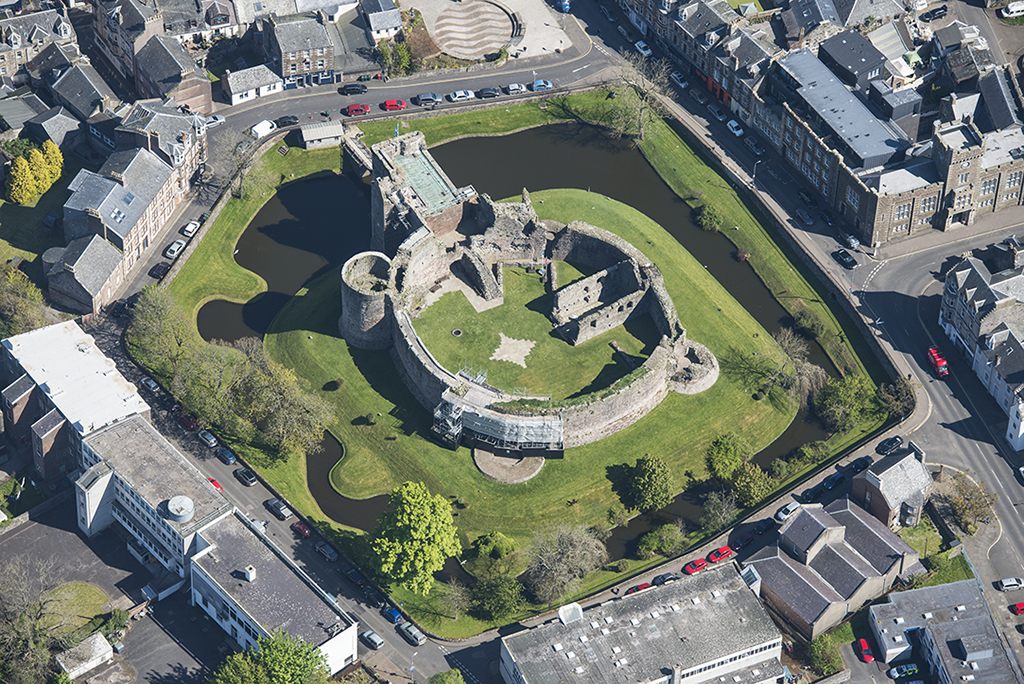
Aerial image of Rothesay Castle
We think the Bute or Bannatyne Mazera ‘mazer’ was made around that time. This communal cup was passed between the lords in celebration. It’s the earliest one in existence, and you can see it in the National Museum of Scotland. The liquid it held, though, is a mystery.
Penance for Power
In 1440, one of the darkest events in Edinburgh Castle’s long and bloody history took place.
James II, who was 10 years old at the time, was hosting a banquet in David’s Tower. Among his guests were the 16-year-old Earl of Douglas and his younger brother.

Illustration showing how David’s Tower might have looked
The company fell silent when the head of a black bull, still dripping with blood, was brought to the table. This symbolised death for the Douglas clan – and it was placed before the young earl.
Moments later the two boys were dragged away and executed, probably by the earl’s uncle who inherited his title and wealth. The king was horrified. It went down in history as ‘The Black Dinner’, and is one of the episodes that inspired George R. R. Martin to write the infamous ‘Red Wedding’ in Game of Thrones.
A Bounty for a Bairn
Close to Christmas in 1566, Mary Queen of Scots arranged a three-day extravaganza at Stirling Castle to celebrate the baptism of her son, the future James VI.
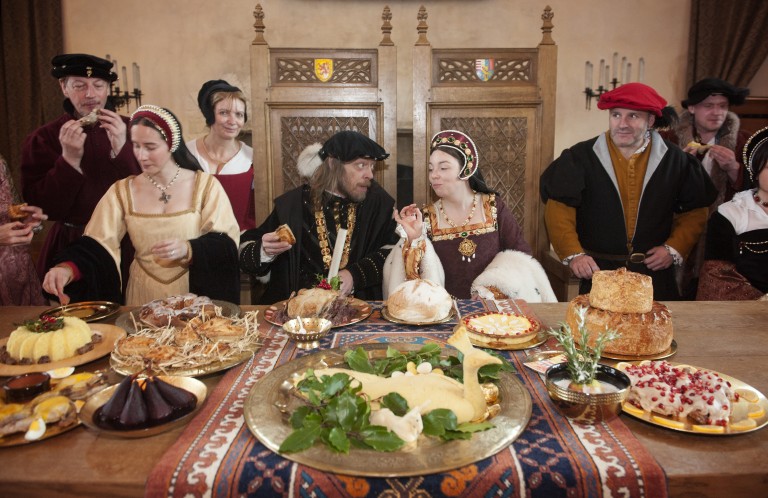
A grand feast was served
A grand feast was served from a mechanical moving stage, operated by centaurs and nymphs. They erected a pasteboard enchanted fortress, which guests watched being attacked by Moors, centaurs and fiends. Finally, fireworks lit the night sky and gunpowder and cannon fire proclaimed the end of the festival.
A Sweet Deal For Sogers?
Soldiers stationed at Edinburgh Castle in the 1800s had a far less luxurious time of it. James Anton was quartermaster-sergeant in the 42nd Royal Highlanders, based at the castle in 1813. The landlady at his billet, he wrote, would give them poor meals in dirty dishes. If they complained, she would answer:
‘It tak’s a deal o’ dirt to poison sogers [soldiers].’
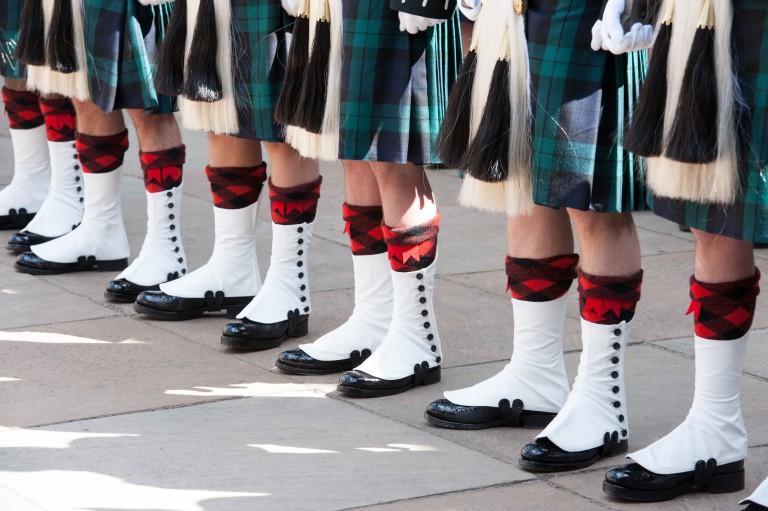
For some though, the army was a chance to experience different foods and fares. Alexander Somerville, recruited to the Royal Scots Greys in Edinburgh, 1831, described his first march south, saying,
‘At Horsham we had roast beef and apple pudding, at Thame we had roast goose [and] at Warwick I was made acquainted for the first time with Yorkshire pudding.’
So there we have it. From feasts to fights, Scotland’s culinary history is full of rewards – deserved and undeserved, good and bad. Fortunately, Scotland’s excellent fare today is more about the foods than the feuds!

